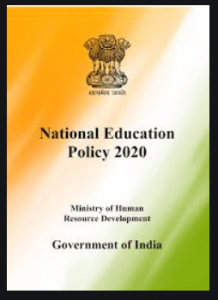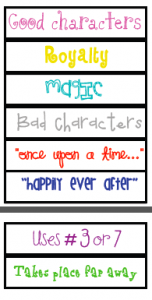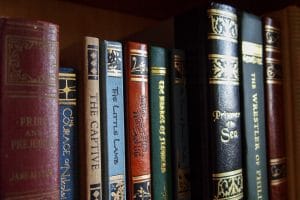 According to the NEP 2020 Policy – “Education is fundamental for achieving full human potential, developing an equitable and just society, and promoting national development. Providing universal access to quality education is the key to India’s continued ascent and leadership on the global stage in terms of economic growth, social justice and equality, scientific advancement, national integration, and cultural preservation”.
According to the NEP 2020 Policy – “Education is fundamental for achieving full human potential, developing an equitable and just society, and promoting national development. Providing universal access to quality education is the key to India’s continued ascent and leadership on the global stage in terms of economic growth, social justice and equality, scientific advancement, national integration, and cultural preservation”.
This new education policy is to build Indian’s talent and resources and help develop universal society, country while positively impacting all. The Government endeavors to provide high-quality educational opportunities to grow holistically for oneself and society.
The SDG goals emphasis on Education is reflected in the 2030 plan of Sustainable development of Education in India, ensuring that Education is inclusive and equitable to promote lifelong learning opportunities for all – including children, adults, and professionals in the field of Education. In fact, 50 hours of Professional Development is required to ensure that educators have the necessary skills and pedagogical understanding and practices for executing the new education policy.
All practices included in the Library and schools must be inclusive and equitable. Being inclusive, it must consist of all groups of individuals to receive the services of a library and include all individuals from different tribes, rural, socially economically disadvantaged groups (SEDGs) children with special needs (CWSNs) and minorities.
NEP 2020 from a Librarian’s Point of View
Looking at the NEP 2020 from a teacher librarian’s point of view, here are some of the takeaways:
To provide best practices to support the fundamental principles of Education, the teacher-librarian to collaborate with Teachers that can promote fundamental principles laid down in the NEP. And, this can be done by pursuing – Curiosity & Passion Projects through cluster groups.
The NEP emphasizes the teachers and faculty, including the Librarian, to have an attitude of service. Keeping that in mind- the Library becomes the education service center of resources in print, digital, and personnel.
Passion Projects with the Librarian to map Fundamental Principles
A collaborative project of creating project work that is driven by students interests, strengths, and choices will enable students to reach its potential as recommended by the NEP that has mapped out the fundamental principles mentioned below:
- To help recognize, identify and foster each individual’s strengths and talents while promoting each student’s holistic development in both academic and non-academic sphere
- The flexibility of choice of learning
- Multidisciplinarity and a comprehensive education across the sciences, social sciences, arts, humanities, and sports when learning about India and the world.
- Emphasis is on conceptual understanding rather than rote learning
- Critical thinking to encourage logical decision-making, problem-solving & innovation
- To provide opportunities to express themselves creatively using a variety of technology tools or drama or writing or service
- Social, ethical, and emotional capacities & dispositions.
Library Place and Dispositions are exemplified in the NEP.
To build an education for an individual, schools, and libraries must provide a safe, welcoming place, where he/she is intellectually stimulated and where the Library becomes a Learning Hub.
A Library – Learning Hub, where the learning environment exists and can engage and provide a variety of learning experiences to the students. Where the focus is on the 21st-century skills with the dispositions that form the core of the individual’s character & personality
Librarians instructional practices and curriculum, therefore, must include a variety of dispositions in an informal setting to help students develop the dispositions cited in the NEP are:
- Values like empathy, respect for others, cleanliness, courtesy, democratic spirit, the spirit of service, responsibility, pluralism, equality, and justice.
- Life skills, such as communication, cooperation, teamwork, and resilience to be included.
- Scientific temper and evidence-based thinking, creativity, and innovativeness; a sense of aesthetics and art
- Oral and written communication; collaboration and teamwork; problem-solving and logical reasoning; vocational exposure and skills;
- Digital literacy, coding, and computational thinking;
- Ethical and moral reasoning; knowledge and practice of human and constitutional values; gender sensitivity.
- Promoting multilingualism and the power of language in teaching and learning.
A collaboration where teachers and Librarians learning process with continuous professional development, positive working environments, and service conditions
Emphasis on the Library in the NEP emphasizes the following, and they are:
- Enjoyable and inspirational books for students at all levels are developed, including through high-quality translation (technology-assisted as needed)
- Public and school libraries to build a culture of reading across the country.
- Digital libraries to be established and serve the community during non-school hours and book clubs may meet in public/school libraries to further facilitate extensive reading.
- A National Book Promotion Policy will take extensive initiatives to ensure the availability, accessibility, quality, and readership of books across geographies, languages, levels, and genres.
According to the NEP – Curriculum and Pedagogy in Schools: Learning Should be Holistic, Integrated, Enjoyable, and Engaging. Library classes and lessons, therefore, must be
- Inquiry-based, discovery-based, discussion-based, and analysis based learning.
- The curriculum will focus on key concepts, ideas, applications, and problem-solving.
- Teaching and learning to be interactive, questioning to be encouraged, and sessions will include engagement from the student side.
- Art and sports integration
- Multi-lingual learning
Collection of the Library, as recommended by the NEP, must be inclusive and include the following:
- Digital
- Multi-lingual
- Multi-leveled books
- Bi-lingual books
- Indian literature with global literature
- Blend of modern and classical literature in all languages
- Books based on inquiry, critical thinking and problem solving
- In addition to high-quality offerings in Indian languages and international languages, language learning is encouraged to help students learn about the cultures of the world and enrich their global knowledge.
- Folklore and stories from different states
- Resources to include pride in India, and it’s diverse, ancient and modern culture and knowledge systems and traditions
- And resources to lead to Global awareness( we cannot live in isolation)
Librarians Lesson plans to include the following skills when planning
- Scientific temper and evidence-based thinking
- Creativity and innovativeness, problem-solving and logical reasoning
- Sense of aesthetics and art
- Oral and written communication
- Collaboration and teamwork
- Digital literacy and information literacy
- Ethical and moral reasoning
According to the NEP, the content to include the following:
– Knowledge of India: ancient and modern
– Environmental awareness including water and resource conservation, sanitation and hygiene
– Current affairs and understanding of critical issues facing local communities
– The specialties of each state, countries and the world around
– Tribal and indigenous knowledge
– All forms of literature Indian and International
– A multi-disciplinary approach to all subjects
If a librarian nurtures the profession to become a teacher-librarian, they can also request continuous Professional Development of 50 hours a year as prescribed by the NEP 2020.
For schools to execute new practices offered by the NEP 2020, they will be introducing a wave of Professional development opportunities that will be provided to all faculty members. Here is a chance for Librarians to learn with the others in the schools transforming your role from a bookkeeper to a Teacher Librarian.





















